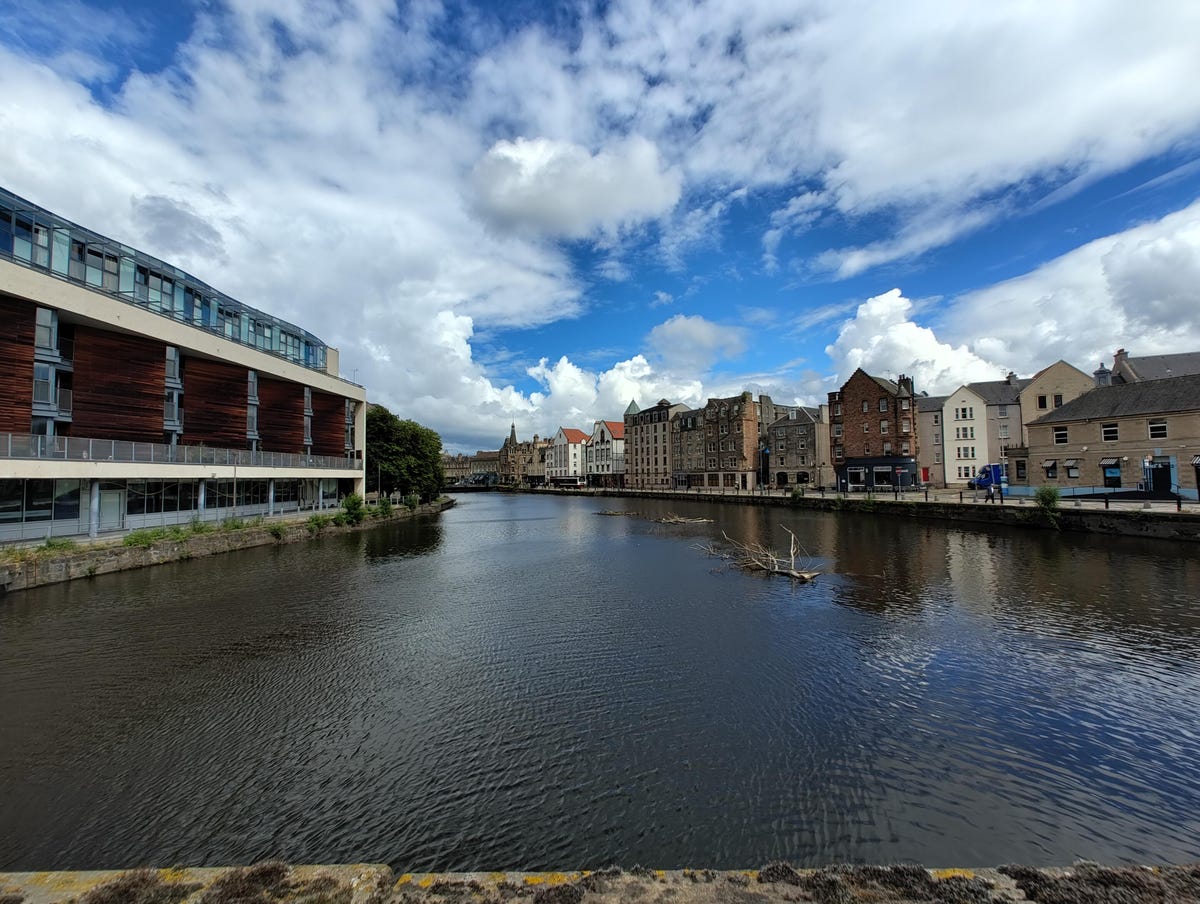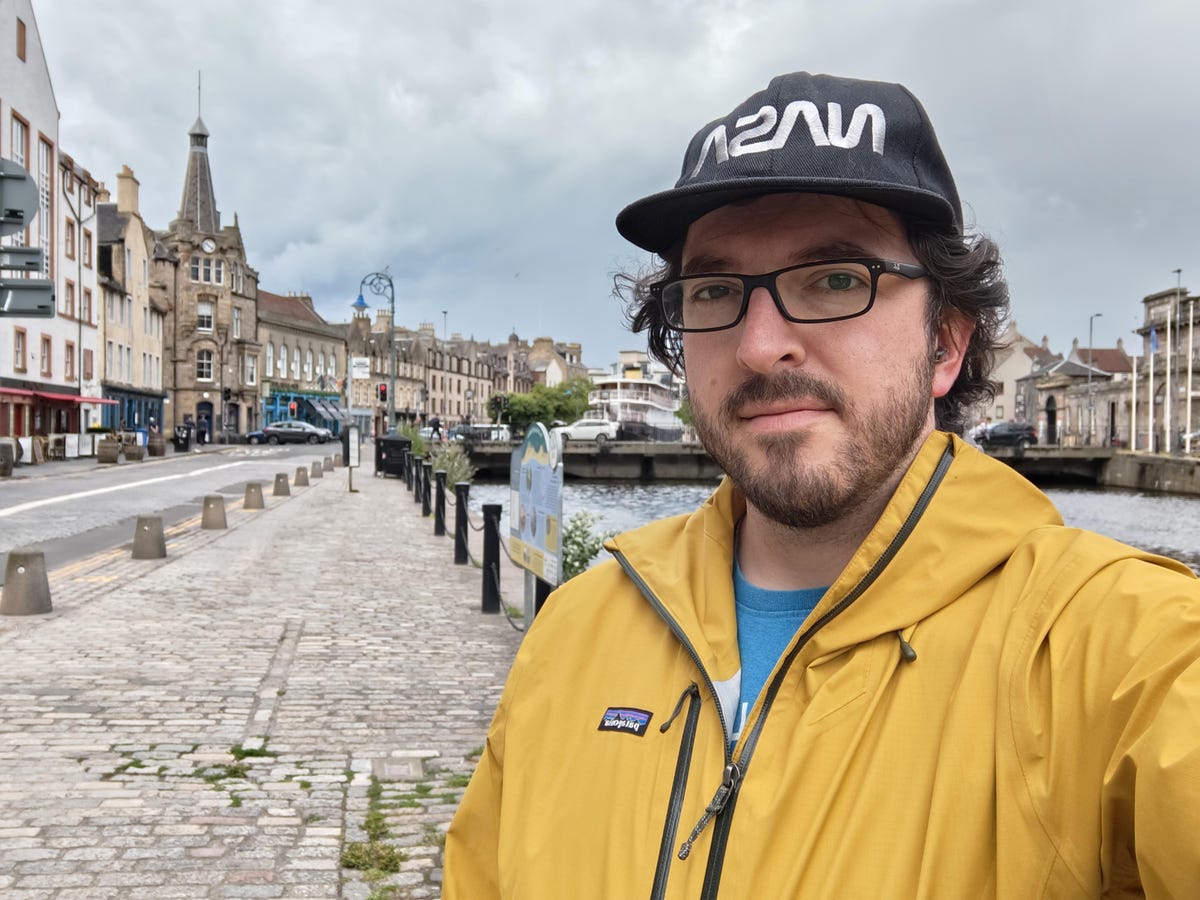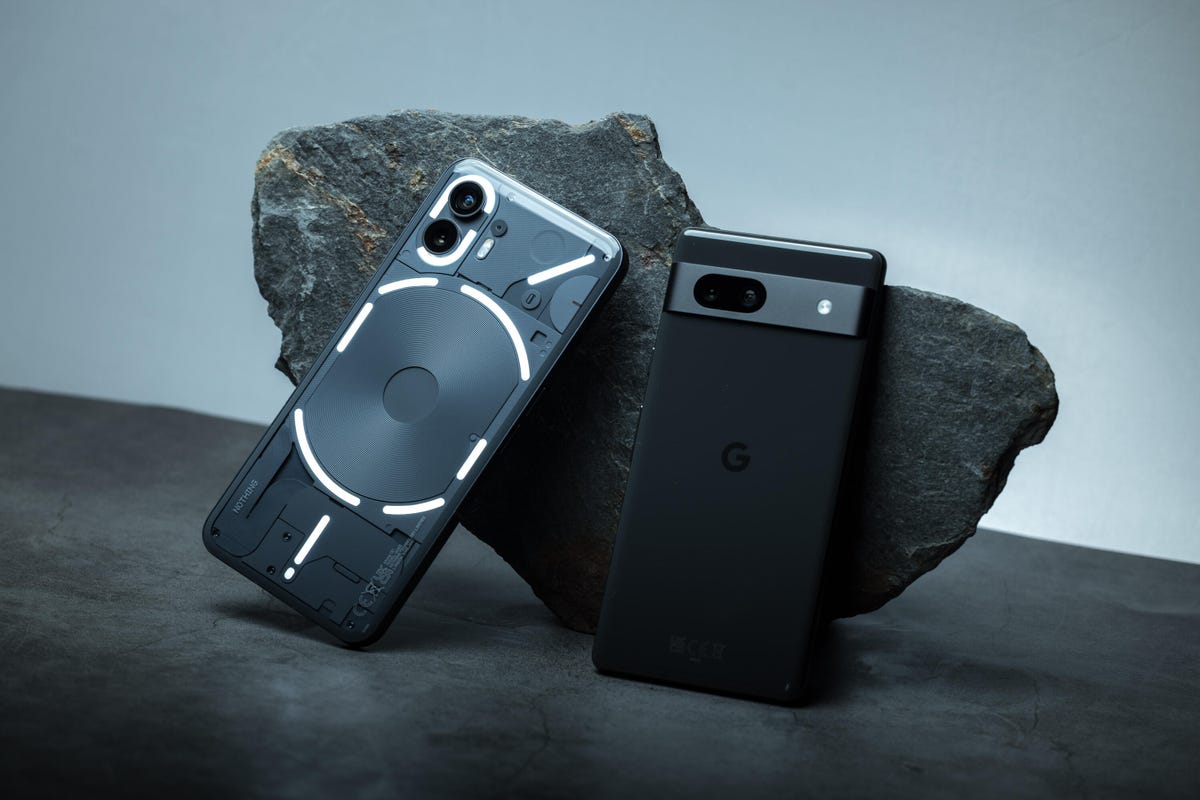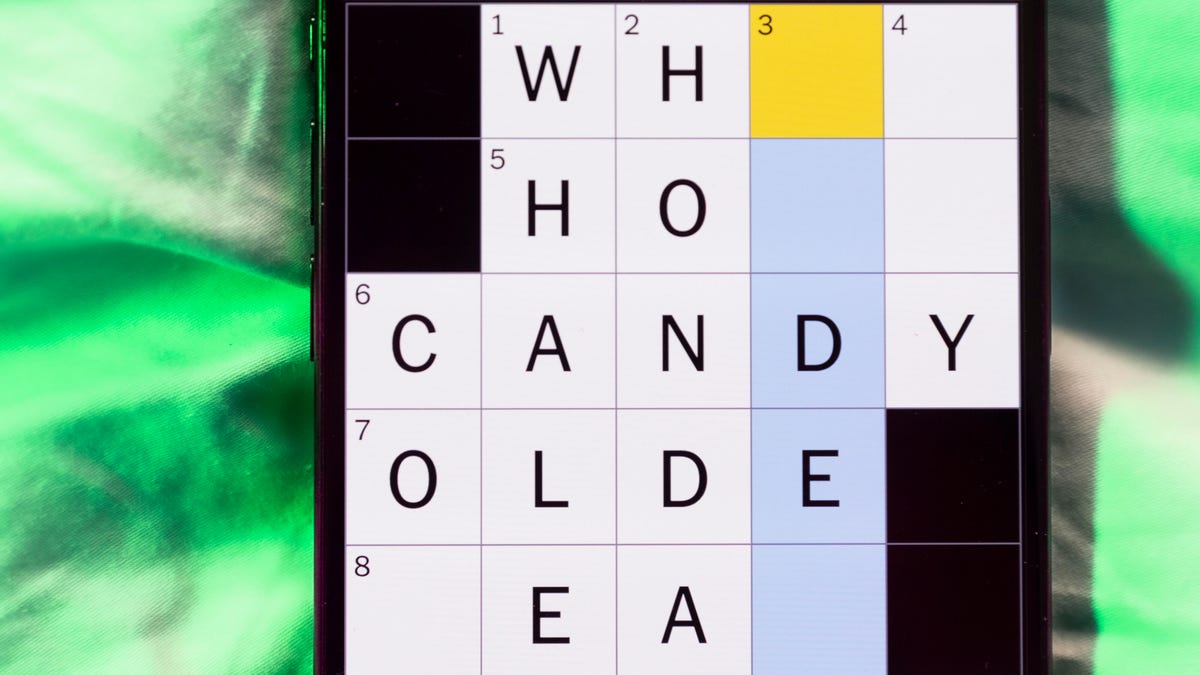Technologies
Nothing Phone 2 Review: A Flashy Phone That Needs to Be Cheaper
The Nothing Phone 2’s lights stand out, but it’s not without its problems.

The first Nothing Phone impressed us with its solid all-round performance, its low price and of course its flashing lights. But it never officially made it to the US, aside from an unusual beta program. This second-generation phone is here to change that.
When it goes on sale in the United States and the wider world from July 16, the Nothing Phone 2 will have a range of upgrades, from the processor to the design. But at $599 and £579 (with 8GB RAM and 128GB storage) it’s $100 more than the first generation, and the competition at this price point has never been more fierce. Especially as my test model with 12GB RAM and 256GB of storage actually costs $699.

Google’s Pixel 7A in particular has a slightly better dual camera, and its pure Android 13 software is slick to use. The Pixel 7A’s processor isn’t as powerful as the Nothing Phone 2’s, but the Google phone’s much more affordable $449 price tag more than makes up for that. Then there’s the Pixel 7 Pro — Google’s flagship — which has one of the best cameras it’s possible to find on a phone and is currently on sale (with 128GB of storage) for only $649 at Best Buy. If photography is important to you, I’d recommend spending the small amount extra.
There’s also the OnePlus 10T, which boasts the same powerful Snapdragon 8 Plus Gen 1 processor as the Nothing Phone 2, has a similar camera setup, and can currently be picked up directly from OnePlus for only $400. Even the OnePlus 10 Pro with its superb camera system is only $480.
The Nothing Phone 2’s flashing LED lights are the main thing that separates it from the competition, and while they’re certainly an interesting quirk, they’re arguably something of a gimmick and not a feature I can see myself genuinely using over time. The phone’s large screen, powerful processor and decent battery life are better reasons to consider buying this device, but at $599, it’s difficult to justify the Nothing Phone 2 over the increasingly strong competition.
A familiar, flashy design
Visually, there hasn’t been a big departure from the first generation. The back is still transparent, letting you see a little of what’s inside the phone, including the exposed screw heads and various connecting segments. The glass is gently curved at the edges now to give it a slightly more premium feel when you hold it.
But it’s the flashing lights — or glyph, as Nothing calls it — that’s the big family resemblance here. Those LEDs light up the back of the phone and can alert you to incoming notifications. Or you can use them for alarms, to show battery charge status, or simply as basic fill light when you’re recording video.
The Phone 2 provides a bit more customization over the glyph this time around, letting you create custom light patterns for certain contacts or apps. There’s also a glyph timer that’ll gradually tick down as it reaches zero, and it can also give a convenient visual cue about other time-related things, such as when your Uber is going to arrive, so you can put it down and focus on sorting out your hair while keeping an eye on its progress. Nothing says it’ll be working with other app developers to integrate this functionality.
The glyph lights certainly made the original phone stand out against the competition, and though they’re arguably something of a gimmick, it’s nice to see a bit of fun and flair in phones. Especially in midrange phones like this, where interesting designs tend to take more of a back seat to keep prices down. The glyph lights have turned heads when I’ve used the Nothing Phone in front of my friends, but interest quickly fades once the initial curiosity is satisfied. Can I genuinely see myself making use of the lights over time? Honestly, no.

But the glyph lights aren’t the only physical things to care about. The aluminum frame is 100% recycled. There’s a fingerprint scanner hidden beneath the display, which works well most of the time. And the phone is IP54 rated to help keep it safe when you have to take calls in the rain. The 6.7-inch display is big and bright enough to do justice to vibrant games or to YouTube videos you’re watching while on the move, and its adaptive refresh rate lets it drop down to only 1Hz to help preserve battery life or ramp up to 120Hz for smoother gaming.
Older chip with big potential
Powering the Nothing Phone 2 is a Qualcomm Snapdragon 8 Plus Gen 1 processor backed up by either 8GB or 12GB of RAM (as reviewed). That’s a slightly older generation processor, but it’s still a potent chip that can fully handle most things you’d ever want to throw at it, from video streaming to photo editing to gaming. It chalked up some great scores on our benchmark tests, and it handled demanding games like PUBG and Genshin Impact perfectly well at max settings.
Nothing Phone 2 performance comparison
- Geekbench 6 (single core)
- Geekbench 6 (multi-core)
- 3D Mark WildeLife Extreme
Nothing says it used an older chip because it wanted something tried and tested that would offer a more stable platform at a more reasonable price, and I think that’s probably a fair trade-off. Motorola’s foldable Razr Plus is doing the same thing. It might not be the most recent chip Qualcomm makes (that would be the 8 Gen 2), but it’s still something of a powerhouse that’ll cope with almost anything you’d ever want to do with it.
The Phone 2 runs Android 13 at its core, but Nothing has done a lot to customize the interface. It’s a very monochrome experience, with a heavy reliance on dot-matrix style texts and icons. There are a variety of widgets that use these designs, and even the app icons are black and white to keep with that minimal monochrome aesthetic. That could make it quite difficult to find the apps you want if you rely on those color cues, but you can turn this off in the settings if you want.
A feature that I can see being quite handy is creating folders of apps on your homescreen and hiding them behind an icon — I’m imagining filling this folder with my work-specific apps like Outlook, Zoom and Slack and then covering them up with the briefcase symbol so I don’t have to look at them on my weekend. Lovely stuff.

I don’t often like UIs that heavily customize the look of Android, but there’s something quite stylish about the design that Nothing uses on its phones. If you’re into that kind of stark minimalism, then you’ll no doubt enjoy it.
Nothing promises that the Phone 2 will receive three years of OS updates and an additional fourth year of security updates. That’s a little below the five years that Samsung offers on its phones, but it could certainly be worse. Still, I’d hope to see all manufacturers extending their support period up to and beyond five years to keep phones safe to use for longer and therefore keep more of them out of landfills.
Same cameras, better processing
The back of the phone is home to a 50-megapixel main camera and a 50-megapixel ultrawide camera. Hardware-wise, that’s pretty much the same setup we saw on the Nothing Phone 1. But the improved Snapdragon processor allows for a lot better software processing, with Nothing promising improved colors, exposure and better HDR techniques to help you take nicer-looking shots.
I’ve spent some time testing the camera, and I’m pleased to see vibrant, sharp images that look better than the ones I saw from the first generation phone. Still, it isn’t perfect, with some bright skies still being blown out in the highlights and a heavy-handed sharpening that results in odd image anomalies. Against the cheaper Pixel 7A, I generally prefer the shots from the Pixel.

The Nothing Phone 2’s colors are OK in this example, but there are noticeable patches in the white clouds where it has overexposed the image, resulting in blown-out details. And that’s despite the buildings themselves looking darker. The Pixel 7A’s HDR skills have resulted in a much nicer-looking image overall here.

Switching to the ultrawide lenses on both phones, the story is much the same, with the Nothing Phone 2 managing to again overexpose sections of the sky while underexposing the buildings next to the river. The Pixel 7A’s shot is much more balanced.

Neither phone has a dedicated telephoto zoom lens, but both offer 2x digital zoom modes, using cropping and image sharpening to get closer to your subject. I generally prefer the overall look of the image from the Nothing Phone 2, but though the fine details are sharper, the software sharpening has caused some issues.

Zooming in to 200% on the 2x zoom images, it’s clear that the Nothing Phone 2’s shot looks generally sharper. However, look where I’ve circled in red — on the Pixel 7A the vertical slats are clearly rendered, whereas the Nothing Phone 2’s heavy-handed processing has turned this into a weird spiral mess. So while it’s artificially added more detail in some areas, it’s seriously reduced it in others. At full screen you may never notice this, but it’s worth keeping in mind, especially if you often digitally crop into images later.




Other images from the Nothing Phone 2 are generally bright and vibrant, albeit with that overexposure problem often noticeable.

Ignoring the default mirroring on the Nothing Phone 2, both phones have taken generally well-exposed, sharp shots here. I prefer the white balance and richer yellow of my jacket in the Pixel’s shot, but it’s a close call.
Overall, though, I think the Pixel 7A takes the better photos, which is impressive considering it’s quite a bit cheaper than the Nothing Phone. If photography is important to you, then you should consider looking toward Google — either the 7A or splashing a bit more on the 7 Pro.
Decent battery life
Powering everything is a 4,700-mAh battery that with reasonable use should get you through a full day. It put in a decent effort on our rundown tests, dropping to 91% after two hours of YouTube streaming on full brightness. For reference, the Pixel 7A dropped to 90% after two hours, while Samsung’s Galaxy A54 dropped to 87%.
As with all phones, your actual results will come down to how much you use your device. Hammer it with video streaming and demanding gaming all morning and you’ll need to give it a boost in the afternoon. Most of you will probably just get away with giving it a full charge when you go to sleep each night.

It supports 45-watt fast charging, which Nothing says will take it from empty to full in 55 minutes. That’s decent enough, though it’s a ways behind the 80- or 100-watt charging we’ve seen on other phones outside the US. At this price, though, I can’t argue too much. It has 15-watt wireless charging too, as well as reverse wireless charging if you want to use your phone’s battery to power up your headphones, or another phone entirely.
Is the Nothing Phone 2 a good phone to buy?
The Nothing Phone 2’s flashy LEDs certainly make a statement, and both its processor performance and battery life are strong. But the extra $100 Nothing wants over its predecessor has changed the game. It’s gone from being an affordable budget option to quite a pricey midranger, while the competition has been getting stronger.

The Pixel 7A is arguably its biggest rival, and personally, it’s the phone I’d go for over the Nothing Phone 2. Its processor isn’t as powerful, but it’ll still handle almost all your daily needs, and its camera is better. Plus it’s quite a lot cheaper. I’d also consider the OnePlus 10T over the Nothing Phone — it didn’t impress me at its full price at launch, but its current $400 price makes it a worthy option.
If you love the idea of those flashing lights making your phone stand out from the crowd, then the Nothing Phone 2 is certainly worth considering. It’s a good phone, it’s just about $100 too expensive right now. If you can pick it up with a bit of a discount after the launch excitement has dwindled a little, then that’d be a good use of your money. But at full price, you’ll really need to love those lights to justify the spend.
How we test phones
Every phone tested by CNET’s reviews team was actually used in the real world. We test a phone’s features, play games and take photos. We examine the display to see if it’s bright, sharp and vibrant. We analyze the design and build to see how it is to hold and whether it has an IP-rating for water resistance. We push the processor’s performance to the extremes using standardized benchmark tools like GeekBench and 3DMark, along with our own anecdotal observations navigating the interface, recording high-resolution videos and playing graphically intense games at high refresh rates.
All the cameras are tested in a variety of conditions, from bright sunlight to dark indoor scenes. We try out special features like night mode and portrait mode and compare our findings against similarly priced competing phones. We also check out the battery life by using a device daily as well as running a series of battery drain tests.
We take into account additional features like support for 5G, satellite connectivity, fingerprint and face sensors, stylus support, fast charging speeds and foldable displays, among others that can be useful. And we balance all of this against the price, to give you the verdict on whether that phone, whatever its price is, actually represents good value.
Nothing Phone 2 specs comparison chart
| Nothing Phone 2 | Pixel 7A | Galaxy A54 5G | |
|---|---|---|---|
| Display size, resolution, refresh rate | 6.7-inch OLED; 2,412×1,080 pixels; 1-120Hz | 6.1-inch OLED; 2,400×1,080 pixels; 60/90Hz | 6.4-inch Super AMOLED; 2,340×1,080 pixels; 120Hz |
| Pixel density | 394 ppi | 361 ppi | 403 ppi |
| Dimensions (inches) | 6.38 x 3.00 x 0.33 in | 6.00 x 2.87 x 0.35 in | 6.23 x 3.02 x 0.32 in |
| Dimensions (millimeters) | 162.1 x 76.4 x 8.6 mm | 152.4 x 72.9 x 9.0 mm | 158.2 x 76.7 x 8.2 mm |
| Weight (grams, ounces) | 201g (7.09 oz) | 193g (6.81 oz) | 202g (7.13 oz) |
| Mobile software | Android 13 | Android 13 | Android 13 |
| Camera | 50-megapixel main. 50-megapixel ultrawide | 64-megapixel main, 4K at 6fps. 13-megapixel ultrawide, 4K at 30fps | 50-megapixel wide, 12-megapixel ultrawide, 5-megapixel macro |
| Front-facing camera | 32-megapixel | 13-megapixel, 4K@30fps | 32-megapixel |
| Video capture | 4K at 60fps | 4K | 4K |
| Processor | Snapdragon 8 Plus Gen 1 | Tensor G2 | Exynos 1380 |
| RAM, storage | 8GB + 128GB. 12GB + 256GB | 8GB + 128GB | 6GB + 128GB. 8GB + 256GB |
| Expandable storage | No | No | Micro SDXC |
| Battery, charger | 4,700 mAh; 45W wired charging | 4,385 mAh; 18W fast charging, 7.5W wireless charging | 5,000 mAh; 25W wired charging |
| Fingerprint sensor | In-display | Side | In-display |
| Connector | USB-C | USB-C | USB-C |
| Headphone jack | None | None | None |
| Special features | 5G-enabled, IP54 water resistance, flashing rear lights | 5G (5G sub6 / mmWave ), IP67 rating | 5G (mmw/Sub6), IP67 rating |
| Price off-contract (USD) | $599 | $499 / $549 (mmW) | $449 (6GB/128GB) at launch |
| Price (GBP) | £579 | £449 | £449 (6GB/128GB) at launch |
| Price (AUD) | AU$1,120 converted | AU$749 | AU$649 (6GB/128GB) at launch |
Technologies
Today’s NYT Mini Crossword Answers for Sunday, Nov. 16
Here are the answers for The New York Times Mini Crossword for Nov. 16.

Looking for the most recent Mini Crossword answer? Click here for today’s Mini Crossword hints, as well as our daily answers and hints for The New York Times Wordle, Strands, Connections and Connections: Sports Edition puzzles.
Need some help with today’s Mini Crossword? For me, 7-Across was a bit of a stumper, but I eventually solved it. Read on for the answers. And if you could use some hints and guidance for daily solving, check out our Mini Crossword tips.
If you’re looking for today’s Wordle, Connections, Connections: Sports Edition and Strands answers, you can visit CNET’s NYT puzzle hints page.
Read more: Tips and Tricks for Solving The New York Times Mini Crossword
Let’s get to those Mini Crossword clues and answers.
Mini across clues and answers
1A clue: Cars that stop at Supercharger stations
Answer: TESLAS
7A clue: What «e-» can mean
Answer: ONLINE
8A clue: Words that might begin the name of a quaint English inn
Answer: YEOLDE
9A clue: What «E» can mean
Answer: EMPTY
10A clue: Easter egg colorings
Answer: DYES
Mini down clues and answers
1D clue: Messed (with)
Answer: TOYED
2D clue: Ally’s opposite
Answer: ENEMY
3D clue: What «m» stands for in the equation «y = mx + b»
Answer: SLOPE
4D clue: Musical cadences of speech
Answer: LILTS
5D clue: Samberg of «Brooklyn Nine-Nine»
Answer: ANDY
6D clue: «___ what I did there?»
Answer: SEE
Technologies
Today’s NYT Connections Hints, Answers and Help for Nov. 16, #889
Here are some hints — and the answers — for the NYT Connections puzzle for Nov. 16, #889.

Looking for the most recent Connections answers? Click here for today’s Connections hints, as well as our daily answers and hints for The New York Times Mini Crossword, Wordle, Connections: Sports Edition and Strands puzzles.
Today’s NYT Connections puzzle is a fun one. As a pop-culture junkie and game lover, I enjoyed the purple category. If you need help sorting the answers into groups, you’re in the right place. Read on for clues and today’s Connections answers.
The Times now has a Connections Bot, like the one for Wordle. Go there after you play to receive a numeric score and to have the program analyze your answers. Players who are registered with the Times Games section can now nerd out by following their progress, including the number of puzzles completed, win rate, number of times they nabbed a perfect score and their win streak.
Read more: Hints, Tips and Strategies to Help You Win at NYT Connections Every Time
Hints for today’s Connections groups
Here are four hints for the groupings in today’s Connections puzzle, ranked from the easiest yellow group to the tough (and sometimes bizarre) purple group.
Yellow group hint: Different strokes for different folks.
Green group hint: Ho-hum.
Blue group hint: Flags often qualify.
Purple group hint: Do not pass Go.
Answers for today’s Connections groups
Yellow group: Technique.
Green group: Run-of-the-mill.
Blue group: Stripy things.
Purple group: Words on Monopoly squares.
Read more: Wordle Cheat Sheet: Here Are the Most Popular Letters Used in English Words
What are today’s Connections answers?
The yellow words in today’s Connections
The theme is technique. The four answers are approach, method, philosophy and school.
The green words in today’s Connections
The theme is run-of-the-mill. The four answers are banal, everday, humdrum and pedestrian.
The blue words in today’s Connections
The theme is stripy things.The four answers are barcode, IBM logo, rugby shirt and zebra.
The purple words in today’s Connections
The theme is words on Monopoly squares. The four answers are avenue, parking, railroad and tax.
Technologies
Today’s NYT Strands Hints, Answers and Help for Nov. 16 #623
Here are hints — and answers — for the NYT Strands puzzle for Nov. 16, No. 623.

Looking for the most recent Strands answer? Click here for our daily Strands hints, as well as our daily answers and hints for The New York Times Mini Crossword, Wordle, Connections and Connections: Sports Edition puzzles.
Today’s NYT Strands puzzle is tough. It’s a weird theme, and some of the answers are difficult to unscramble, so if you need hints and answers, read on.
I go into depth about the rules for Strands in this story.
If you’re looking for today’s Wordle, Connections and Mini Crossword answers, you can visit CNET’s NYT puzzle hints page.
Read more: NYT Connections Turns 1: These Are the 5 Toughest Puzzles So Far
Hint for today’s Strands puzzle
Today’s Strands theme is: Around it goes.
If that doesn’t help you, here’s a clue: They’re often on a roll.
Clue words to unlock in-game hints
Your goal is to find hidden words that fit the puzzle’s theme. If you’re stuck, find any words you can. Every time you find three words of four letters or more, Strands will reveal one of the theme words. These are the words I used to get those hints but any words of four or more letters that you find will work:
- CARE, SCARE, CRASS, SWAT, PELL, HELL, SCAR, HALT, STENT, HALTS, TENT, POLL, LOTS
Answers for today’s Strands puzzle
These are the answers that tie into the theme. The goal of the puzzle is to find them all, including the spangram, a theme word that reaches from one side of the puzzle to the other. When you have all of them (I originally thought there were always eight but learned that the number can vary), every letter on the board will be used. Here are the nonspangram answers:
- FOIL, SCARF, SHAWL, STOLE, FLATBREAD, CELLOPHANE
Today’s Strands spangram
Today’s Strands spangram is THATSAWRAP. To find it, start with the T that’s three letters up from the bottom of the far-left row, and wind down, over and then up.
-

 Technologies3 года ago
Technologies3 года agoTech Companies Need to Be Held Accountable for Security, Experts Say
-

 Technologies3 года ago
Technologies3 года agoBest Handheld Game Console in 2023
-

 Technologies3 года ago
Technologies3 года agoTighten Up Your VR Game With the Best Head Straps for Quest 2
-

 Technologies4 года ago
Technologies4 года agoBlack Friday 2021: The best deals on TVs, headphones, kitchenware, and more
-

 Technologies4 года ago
Technologies4 года agoVerum, Wickr and Threema: next generation secured messengers
-

 Technologies4 года ago
Technologies4 года agoGoogle to require vaccinations as Silicon Valley rethinks return-to-office policies
-

 Technologies4 года ago
Technologies4 года agoOlivia Harlan Dekker for Verum Messenger
-

 Technologies4 года ago
Technologies4 года agoiPhone 13 event: How to watch Apple’s big announcement tomorrow



